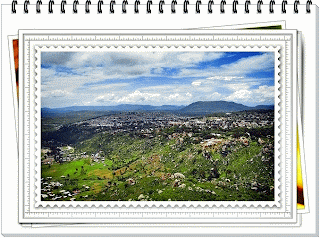Masjid: Mosques of Eastern Africa III
 |
| Kilwa |
 |
| Kilwa |
Kilwa is divided between Kilwa Kisiwani on the island, Kilwa Kivinje on the mainland and Kilwa Masoko also on the mainland. Some times in the 9th Century, Kilwa Kisiwani, under a Persian descended ruler: Al Ibn Al Hassan, grew to become the main trading center on the East African coast and the Indian Ocean. By the 13th Century, it was the most powerful city on the East African coast. In Kisiwani are the impressive ruins of a 15th Century settlement, including that of a mosque: the Great Mosque of Kilwa. The ruins are a Unesco World Heritage Site.
 |
| Kaole |
Unlike Kilwa which is popular and world famous, very few people know of the ruins of Kaole or visit it; the ruins are a few kilometers from Bagamoyo. The ruins have ancient mosques and tombs, one mosque is believed to be the remnant of the oldest mosque in East Africa, dating back to between the 3rd and 4th centuries. The tombs were built from coral stones with stone pillars that marked some of the tombs.
 |
| Tanga |
Tanga, on the Tanzanian mainland coast, in many ways, is very much like Mombasa. Unlike the other major towns along the Tanzanian coast, Tanga was not founded by Arabs but by Germans in the 19th Century. As such, it hasn't any historical sites. But, it too, has many mosques.
 |
| Arusha |
Arusha: the capital of the East African community, has wonderful climate; is the most beautiful and most scenic city in Tanzania: mounts Kilimanjaro and Meru, the Serengeti, the Ngorongoro and the Tarangire are all a short distance a way. Arusha too, was founded by the Germans, as a military fortress, in the early 20th Century. There are fewer Muslims here than at the coast; and fewer mosques.
Moshi: another city with pleasant weather and beautiful scenery all around. And it is neat. It too, was started by the Germans, as a garrison, in the early 20th Century. It has many tourists attraction, but non historical. It has a few, small mosques.
 |
| Moshi |
 |
| Masjid |
Most of Tanzania's Muslims live along the coast and it is along the coast that most of the country's mosques can be found. Mainly in the urban areas, north to south, in: Tanga, Bagamoyo, Dare es Salaam; and far in the south, in: Lindi and Mtwara.
 |
| Masjid |
Lindi, once, long ago, was a very important trading center and transit post for Arab merchants. Today, it is a sleepy small town; so remote and distant, that few people think of visiting it. Most Tanzanian coastal urban centers are in many ways, very Arabic and Islamic; more so - Lindi, where Arabs are large in numbers and are the most prominent businessmen here. Any Arab, especially one from Hadhramout, would feel very much at home here. Lindi has several small mosques.
 |
| Iringa |
How can anyone leave a place so as stunningly beautiful and picturesque as Iringa? A place of soothing green valleys and mountains; a place of rivers and amazing wildlife? I have wondered: as a baby, this is where I took my first steps and learnt how to walk; I spent a few years of my childhood in this place, but for no good reason that I have been given - my Parents decided to move the family out of here. That aside: Iringa epitomizes what Tanzania is. It is a unique nation where Muslims and people of other religions live together peacefully and in harmony. One of the most structures prominent here, is a large Christian church. And there are many mosques which can be heard from, throughout the city, the daily five times call for prayers.
 |
| Dar es Salaam |
+ Islam Finder
+ Muslim Population
+ Muslim Population
+ Flickr
+ Picasa

